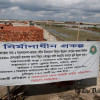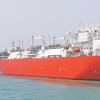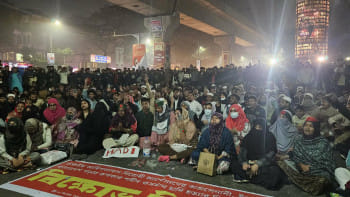For security and affordability, we must shore up renewable energy

The Bangladesh Bank recently withdrew the lending cap for coal-based power plants. The move aims to facilitate the purchase of coal needed to operate new coal-fired power plants of 6,754-megawatt (MW) capacity, which are set to come online in a few years. However, as the decision allows banks to lend beyond their 25 percent cap to a single borrower, it may encourage the private sector to bring forward proposals to build more coal-fuelled power plants.
Easing lending norms for coal-based power plants might dent the country's recent strides towards a clean energy transition.
In June 2021, amid uncertainty over international funding for new coal-fired plants and environmental concerns, Bangladesh scrapped 10 coal-based power plant projects. The declaration of shoring up renewable energy capacity to 40 percent by 2041, as part of the Mujib Climate Prosperity Plan (MCPP), reinforced the government's commitment to clean energy.
Fossil-fuel-based electricity generation has already thrown up several challenges for our power sector. Instead, increasing renewable energy capacity would address some of the sector's challenges and enhance energy security and affordability in Bangladesh.
One of the key challenges that the power sector is grappling with is overcapacity. In 2022, the government announced 100 percent electricity coverage in the country, following its commendable efforts in ramping up installed power generation capacity five-fold.
However, while installed capacity has increased considerably, power demand has not been able to keep pace.
Against the installed capacity of 22,512MW, excluding off-grid solar and captive systems, the highest demand served by the national grid was 14,792MW on April 16, 2022. A study by the Institute of Energy Economics and Financial Analysis (IEEFA), based on Bangladesh Power Development Board (BPDB) data, substantiated that the country only utilised 40 percent of the power capacity during 2019-20.

A closer inspection of BPDB data from November 1 to 7 this year shows that the highest demands for electricity during morning and evening peaks were 10,385MW and 11,116MW, respectively. During mid-May 2022, the evening peak demand for electricity was close to 14,000MW against the morning peak of around 11,500MW. Therefore, the country's power system has a good amount of surplus capacity.
With no sign of a dramatic rise in power demand in the country, surplus power capacity will only rise once the planned 6,754MW of coal-fired plants start operating.
The other key challenge for the sector is rising costs.
A recent report shows that the average cost of per unit electricity generation has soared to Tk 10 (USD 0.095) in 2022, compared to Tk 6.81 (USD 0.065) during the 2020-21 fiscal year. This steep rise is mainly because of the high cost of imported diesel, furnace oil, and liquefied natural gas (LNG).
With more coal-fired capacity coming online, concerns remain about the price and affordability of the fuel.
Reportedly, the Asian coal price per tonne hit USD 457.8 in September 2022, which is 3.5 times the effective coal price of USD 130 per tonne, as considered in the BPDB annual report for FY2020-21. While the price of coal is falling, it still hovers around USD 325 per tonne. With 4.12 million tonnes of coal consumed annually in the operational 1,320MW Payra power plant alone, the demand for imported coal will shoot up by an additional 20 million tonnes once the new coal-fired plants begin operations. This would affect Bangladesh's energy security.
Overall, the challenges the power sector experiences today emanate from the increasing focus on imported fossil-fuel-based development, alongside the quest for power sector security instead of energy security. The addition of power generation capacity, irrespective of a rational assessment of demand, continues to result in a high level of surplus capacity.
To counter this, Bangladesh could increase the share of renewable energy to cover the morning peak demand and/or reduce fossil fuel usage during the day to minimise the average cost of electricity.
Rough estimates show that the levelised costs of energy from rooftop solar and utility-scale solar are Tk 5.5 (USD 0.052) and Tk 7.6 (USD 0.072), respectively, against the BPDB's current average electricity generation cost of Tk 10.
Moreover, the Power Cell's analysis of last year substantiated that the cost per unit of electricity generation at the Payra plant using imported coal would be Tk 7.78 (USD 0.074). The elevated price of coal in the international market suggests that electricity from the Payra coal-fired plant would be costlier than the rate calculated last year.
According to the Infrastructure Development Company Ltd (IDCOL), industrial rooftops could accommodate 5,000MW of solar power systems. Since net metering guidelines are already in place, industries could take advantage of cost-competitive renewable energy and reduce their average energy cost to remain competitive.
In light of the seeming land scarcity, a thorough land resource assessment could help identify the areas for utility-scale renewable energy projects. Finally, Bangladesh has planned for some 97 special economic zones, which could be a good fit for renewable energy projects.
With the risk of coal projects being stranded assets in the coming years, Bangladesh must not invest in new coal-based plants other than those nearing completion. As fiscal pressures mount due to decreasing foreign currency reserves, cost-competitive renewable energy options such as rooftop solar and utility-scale solar power systems are better suited to shore up capacity in the national grid. This would help meet the goals of enhancing energy security and affordability. In addition, it would help relieve fiscal burden on the energy and power sectors. Moreover, surplus capacity in the sector would allow flexibility in operation with the increasing share of renewable energy.
Shafiqul Alam is an energy finance analyst at the Institute for Energy Economics and Financial Analysis (IEEFA). He works in areas of energy transition, climate change and climate finance.

 For all latest news, follow The Daily Star's Google News channel.
For all latest news, follow The Daily Star's Google News channel. 









Comments